Home » Articles posted by Brad Costello (Page 4)
Author Archives: Brad Costello
Construction Begins on Tennessee’s Most Expensive Road Project

Work has begun on widening I-65 from Nashville to the Kentucky line, the highest-cost road project in the state’s history.
The interstate will be widened from four to six lanes.
In all, nearly 26 miles of roadway will be widened to address safety and improve traffic flow. The roadway currently sees high traffic, especially at peak commuter times, leading to traffic jams and crashes, says the Tennessee Department of Transportation.
Shoulders of 12 feet wide will be added, as well as concrete median barrier wall in places.
The project includes two northbound truck-climbing lanes and an auxiliary lane in each direction between interchanges at Exits 96 and 97.
The project has been broken down into five phases. Jones Bros. of Tennessee has won the $160 million contract – the largest award in TDOT history – for the 9.68-mile section from State Route 25 to near SR 109 in Davidson County, which is set to begin.
Along with widening, that section requires the replacement of 10 bridges, replacing an overpass and building 17 retaining walls. The northbound weigh station will be converted to tractor trailer parking. And Intelligent Transportation Systems will be added throughout the corridor.
Work is expected to be completed in December 2025, with road closures mostly on nights and weekends. The contractor has incentives to finish early, as well as penalties for missing deadline, according to TDOT.
Other sections of the project are as follows:
From Rivergate Parkway to near SR 41 (US 31W)From near SR 41 (US 31W) to near SR 257 (Bethel Road)From SR 257 (Bethel Road) to SR 25 (Main Street)
A section between SR 109 and the Kentucky line has been completed.
Did you miss our previous article…
https://www.tortowheaton.com/?p=422
Industry Roundup: National Equipment Dealers buys Richardson
National Equipment Dealers (NED) has bought Richardson Service 1991, expanding its organization in South Carolina.
Based in Conway, South Carolina, Richardson specializes in construction, forestry and compact equipment and will now represent Hyundai Construction Equipment, Manitou, Sakai, Yanmar and Bell.
The former Richardson branch will be the first location among NED companies renamed as NED. Over the coming months, NED will rebrand the remaining MAY-RHI, Earthmovers Construction Equipment and Four Seasons branches to NED.
Through Richardson, NED gains the Berko, CMI and Prinoth lines. The entire Richardson team will remain with NED.
F&W adds Ransome Attachments

Pictured are (from left): Eric Ransome and Barbara Freund of Ransome Attachments, and Matt Valentine and Mark Laigle of F&W.Ransome Attachments
F&W Equipment has added the complete line of attachments offered by Ransome Attachments, including its Exac-One Mini Mower and Black Splitter S2 800 Cone Splitter.
F&W also offers Kubota compact and mid-size farm and landscaping equipment, Doosan excavators, wheel loaders and compact equipment, as well as other specialty equipment.
Maverick joins Morbark
Maverick Environmental Equipment has been named a Morbark Industrial Products dealer for Ohio, Indiana, Kentucky and western West Virginia. Maverick has locations in Newbury and Bremen, Ohio, with a focus on aggregate processing, waste recycling, forestry and biomass.
H&E completes crane sale
H&E Equipment Services has completed the $130 million cash sale of its crane business to Manitowoc. H&E says it will use the funds for facilities expansion, rental fleet investment and general corporate purposes.
“We believe our transition to a pure rental business strategy should result in improved revenues and margins through the industry cycle,” says Brad Barber, H&E CEO.
H&E also sold two earthmoving distribution branches in Arkansas, and will remain a distributor of earthmoving equipment in Louisiana. The company now has 101 branch locations in 24 states.
SMH Group adds Wood’s CRW
Wood’s CRW is now a dealer for Atlas material handlers, owned by SMH Group US. The Atlas line includes mobile industrial machines and industrial tracked machines for the scrap, wood and recycling markets, among others.
Based in Williston, Vermont, Wood’s CRW has four locations with coverage in all or part of eight states. It offers Volvo Construction Equipment, Link-Belt cranes and excavators, National cranes and Mecalac product lines.
Did you miss our previous article…
https://www.tortowheaton.com/?p=416
Case Unleashes Industry’s Largest Compact Track Loader, the TV620B

With an operating capacity of 16,100 pounds, Case’s newest compact track loader is now the largest in the industry, designed for size and power for residential construction and land clearing. The company unveiled its new CTL at The Utility Expo in Louisville, Kentucky.
Powered by a 114-horsepower engine, the TV620B provides 12,907 pounds of loader breakout force and 12,907 pounds of bucket breakout force. It has a rated operating capacity of 6,200 pounds.
Built on an extra-large frame, Case says, the TV620B isn’t just the big brother of the TV450; the machine was redesigned from the ground up.
“We talked to a lot of customers who were running larger CTLs and asked them what they’d like to see,” said George MacIntryre, product manager, Case. “We really focused on certain areas making sure that the frame was robust and could stand up to harsh conditions. A piston pump comes standard on this model giving customers the flow and pressure ratings they need to run big attachments. Lastly, we focused on the performance of the loader to be able to dump into high-sided trucks.”
More features now come standard on the TV620B, including:
Electro-hydraulic controlsHigh-flow hydraulicsAutomatic Ride Control and one-way self-levelingA programmable hydraulically reversing fanLED lightsThe new SiteConnect ModuleOne year of Case SiteWatch telematics
Electro-hydraulic controls allow the operator to set total machine responsiveness to low, moderate or aggressive, or independently set tilt, lift and drive speed, as well as loader arm and drive control to adjust to the demands of the job. This is set through the LCD multi-function display in the cab, which also comes standard, Case says.
“We are giving the operator more precise and intuitive control than they’ve ever had in a Case CTL and making the machine as simple to operate for as broad a range of applications as possible,” said MacIntyre.
High-flow auxiliary hydraulics and enhanced high-flow hydraulics are available options, delivering 3,450 psi and 4,100 psi, respectively, at 41.6 gallons per minute, making mulching heads, cold planers and grading blades ideal companions for this machine. An enhanced hydraulic cooling system maximizes uptime when using high-powered attachments. The TV620B also offers a selection of buckets, including a heavy-duty 84-inch, 1.25-cubic-yard bucket with SmartFit teeth.
One-way self-leveling and automatic ride control with adjustable speed settings reduce material spillage and deliver a smoother ride. Operators can adjust the foot pedal to serve one of three functions — accelerator (traditional acceleration), trans (reduces drive speed but retains rpm for loader arm functions), or decel (traditional deceleration).
The beefed-up undercarriage on the TV620B takes a nod from Case’s 650M dozer. “It’s much heavier-duty than the size class down from this,” said MacIntyre. “The idler ceiling on the TV620B is similar to the 650M dozer. The dozer components are a little bit larger than what we have on the CTL, but it’s really just a downsized version of what we have on the very reliable Case dozers.” Additionally, the 17.7-inch rubber tracks allow for minimal ground disturbance (6.1 psi) and enhanced performance on improved surfaces.
With a maximum dump height of 39 inches and 140.2-inch hinge pin height, the machine is well-suited for loading trucks. But MacIntyre says the loader arms will also look different from previous Case models. “We’ve gone to a straight-in-line loader arm linkage, giving great visibility down to the coupler and bucket area. It also allows the cab to be tipped forward with the loader arms in the down position to get even better access to all the components that are underneath the cab.”
Inside the cab, the TV620B features 360-degree visibility and an 8-inch split-screen display that simultaneously shows both the rearview camera and equipment information. A cab-wide rearview mirror gives visibility to the back of the machine. Large windows provide visibility to the front of the machine down to the attachments and optimal sight lines to the sides and rear of the machine.
Ground-level maintenance points allow for easy access to critical components. “The rear of the machine features an extra-large engine compartment so the components are easily accessible for daily checks,” said MacIntyre. “Our battery is located in a separate panel with the battery and master disconnect switch. It’s very easy to access – you don’t need to open up the rear hood for that.”
A combination of cooled exhaust gas recirculation (CEGR), diesel oxidation catalyst (DOC) and selective catalytic reduction (SCR) technologies enables the machine to meet emissions standards. The TV620B features no diesel particulate filter (DPF) and requires no regeneration, reducing downtime. An adjustable hydraulically reversing fan minimizes the buildup of debris in the engine compartment.
Production of the TV620B is underway, and customers can expect to see it at dealers in Q4 2021.
Quick Specs
Operating Weight: 16,100 pounds
Engine Horsepower: 114
Rated Operating Capacity (50 percent tipping load): 6,200 pounds
Rated Operating Capacity (35 percent tipping load): 4,340 pounds
Hinge Pin Height: 140.2 inches
Reach at Maximum Dump Height: 39 inches
Loader Breakout Force: 12,084 pounds
Bucket Breakout Force: 12,907 pounds
High-Flow Auxiliary Hydraulics: 41.6 gallons per minute at 3,450 psi; 83.7 hydraulic horsepower
Enhanced High-Flow Auxiliary Hydraulics: 41.6 gallons per minute at 4,100 psi; 99.5 hydraulic horsepower
Did you miss our previous article…
https://www.tortowheaton.com/?p=406
I-49 Missouri-Arkansas Connector Now Open for 290 Miles
Another link in the planned six-state I-49 has been completed with five miles of roadway opening between the Arkansas and Missouri border.
The project’s completion leaves a 290-mile interstate route from Kansas City, Missouri, to Fort Smith, Arkansas. The last five miles of the connector opened October 1.
The I-49 and I-29 corridor will also eventually pass through Louisiana, Iowa, South Dakota and North Dakota, stretching for 1,600 miles and connecting at I-29 in Kansas City. Plans are to add links to New Orleans area ports.
I-29 extends from Kansas City to Winnipeg, Canada. The eventual goal is to provide an uninterrupted Interstate Trade Corridor from Canada to New Orleans and into Central and South America to the Panama Canal, according to the I-49 International Coalition.
Transportation officials in Arkansas and Missouri say they have been discussing the connector for more than 25 years. Construction has progressed in phases.

Shaking hands, from left, are Arkansas Governor Asa Hutchinson and Missouri Governor Mike Parson at the ribbon cutting for the last section of the I-49 Missouri-Arkansas Connector.Missouri Department of TransportationThe final five miles were built between Pineville, Missouri, where construction ended in 2012, and the Arkansas state line.
The project involved building a four-lane divided highway west of Route 71. Access to the newly designated interstate section is only by interchanges. A new interchange was built at Missouri Route 90 west of Jane. Five bridges were also constructed.
The project’s estimated cost was $70.3 million.
“This high-quality roadway will help promote tourism, business investment and workforce opportunities between our two great states,” said Missouri Governor Mike Parson.
Did you miss our previous article…
https://www.tortowheaton.com/?p=403
Vanair Debuts EPEQ Battery-Powered Truck-Mounted Compressor Line
Vanair unveiled its new electric battery-powered product line for its truck-mounted air compressors and other equipment at this year’s Utility Expo in Louisville, Kentucky.
The new EPEQ equipment allows you to turn off the truck’s engine while running tools and equipment, releasing no emissions from the power source. Prior to the EPEQ debut, Vanair’s products have been PTO-driven off the truck’s chassis, hydraulic driven or they had their own combustion engine.
The heart of the Electrified Power System is the company’s new ELiMent lithium-ion phosphate battery. The system can be mounted on or within combustion-engine vehicles, electric vehicles and trailers.
Along with zero emissions, the EPEQ system reduces noise, heat and weight, while also reducing maintenance and overall vehicle costs, the company says.
The ELiMent battery system can discharge power at the same time it is being charged. ELiMent batteries can power electric-motor driven air compressors, electric-hydraulic power, AC power inverters, welders and electric-driven above-deck air compressors, among other devices.
The 48-volt battery system delivers 5 kilowatts of power. It is designed to be plug and play and mobile, as a 13-inch cube weighing 95 pounds versus a lead-acid battery setup of about 300 pounds and 3 feet. The company says it also plans to soon launch a 48-volt, 7.5-kilowatt version.

The Vanair EPEQ Air20 air compressor is powered by the company’s new battery and doesn’t use the truck’s engine to run.VanairAlong with the new battery system, Vanair displayed its new EPEQ Air20 reciprocating air compressor. The compressor produces 20 cubic feet per minute at 150 psi. It is designed to run such tools as an impact wrench. Vanair says it delivers a 20% efficiency gain for longer battery life.
Vanair also unveiled its EPEQ Air45 air-on-demand rotary screw compressor. It produces 20 to 45 cubic feet per minute for running a 1-inch impact wrench, inflating tires and similar functions.
The company also displayed a truck-mounted above-deck compressor powered by a 300-volt, 30-kilowatt ELiMent battery. The compressor produces 160 CFM at 250 psi.
Other products unveiled at The Utility Expo included:
An EPEQ welder with an integrated battery pack inside it. It weighs 33 pounds. A 48-volt, 5-kilowatt alternator, which allows you to charge the ELiMent battery while the battery is discharging. The alternator can be mounted under the vehicle.An EPEQ 3,000-watt inverter that can take a 48-volt input and put out 120 volts on the vehicle.An EPEQ 5,000-watt inverter that is stackable. So if you add two, then it can work like a 10,000-watt inverter and so on.
The company says all of these devices will communicate with its battery management system.
Did you miss our previous article…
https://www.tortowheaton.com/?p=400
Dozers Decked Out with Tech: Pushing Dirt is Getting Easier
The market is full of new dozers and those new dozers are full of new technology.
The new tech includes increased automation features to make the machines easier to operate.
“One of the biggest struggles facing contractors today is finding and retaining skilled operators,” says Matt Goedert, solutions marketing manager, John Deere. “John Deere is developing several features to help overcome this challenge.”
Manufacturers have also focused on improved design to make their dozers quieter, more comfortable and with increased operator visibility.
Cat improved forward visibility up to 30% on its newest model, the D4. Visibility is especially improved to the top of the blade and the area in front of it. The company lowered the hood line and relocated components that could impede sight.
“The D4 is the smallest of Cat’s mid-size dozers,” says Sam Meeker, market professional, Cat. “Visibility is especially important in applications where this size class is typically found, where obstacles and workers are common on site.”
Here’s a look at the latest dozers and their new technology and design features:
New and improved
The D4 started last year as a rebadged D6K. This was done to align the machine with Cat’s revised machine model naming protocol and to fill a numeric gap in D Series dozers.
The current D4, however, is truly a new machine and has been available since the second quarter of this year.

The Cat D4 is powered by a Cat C4.4 engine rated at 130 net horsepower. Operating weight is 29,259 pounds in non-LGP with 22-inch shoes, and 30,882 pounds in LGP with 30-inch shoes. Blade capacities are 4.26 cubic yards non-LGP and 4.98 cubic yards LGP. Foldable blades are available for both and have the same capacities as the standard VPAT blades.CaterpillarThe rearview camera is integrated into the new 10-inch color touchscreen. The view can be on only during reverse travel or can be left on all the time. In the latter case, the camera view occupies about one-fourth of the screen and is surrounded by operating data. All Next Gen Cat dozers share the same screen layout to help with familiarity.
The D4 has all the machine control options Cat offers on its dozers, including Cat Grade with 3D and the ability to install systems from Topcon, Trimble and Leica. A Waste package includes guarded rear lights, double-skinned fuel and hydraulic tanks, final drive guard and air pre-cleaner.
The HD package is ideal for forestry, demolition and other high-demand applications. It has additional underbelly guards; additional sweeps, sealing and screening to keep out dust and debris; a reversing fan and heavy-duty fenders. Standard and low ground pressure (LGP) versions are available.
A variable pitch angle tilt (VPAT) blade is standard. Blade options include power pitch for more aggressive cutting, and folding blades that bring the blade within the width of the tracks (under 93.3 inches for standard pitch and under 110.8 inches for LGP).
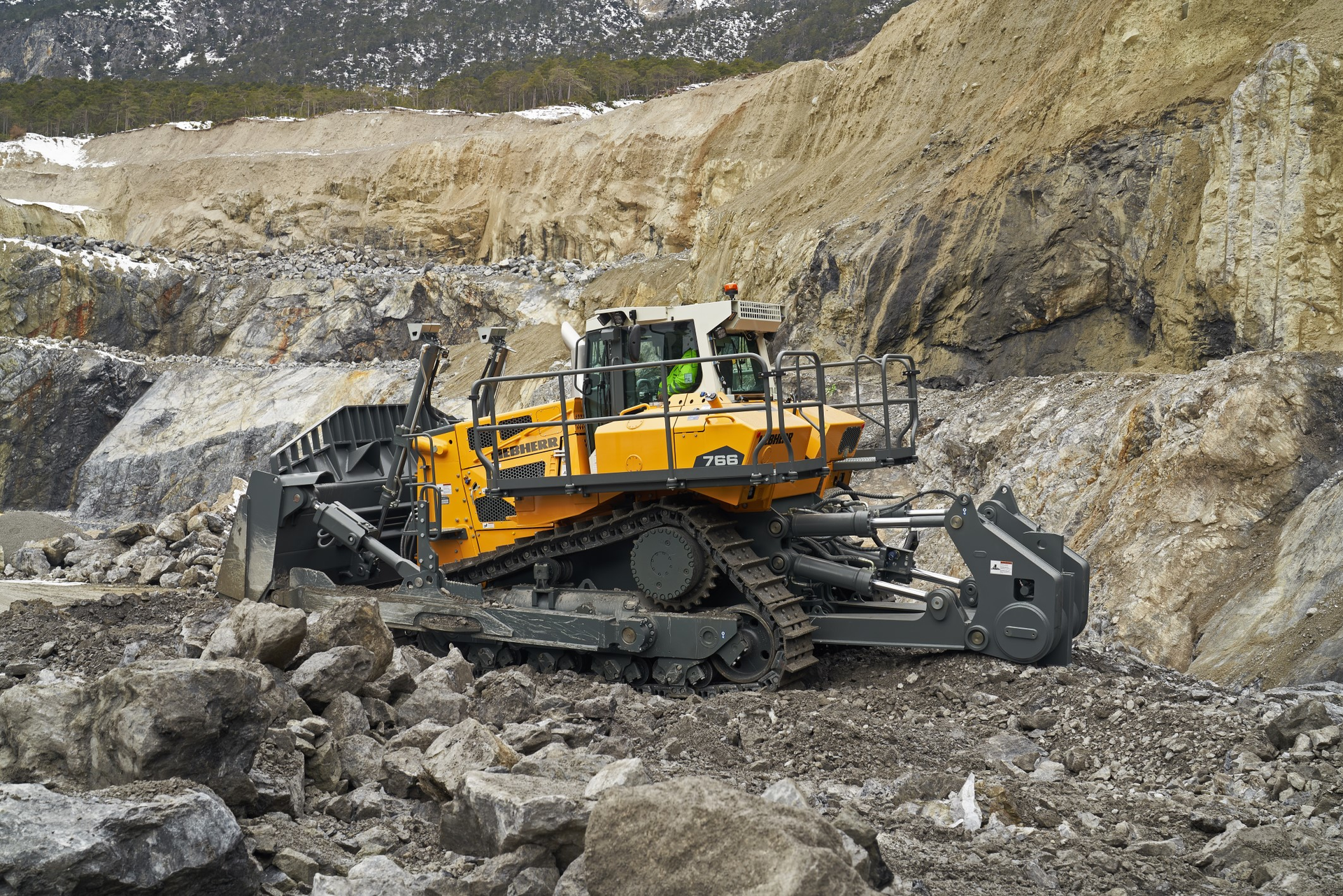
Liebherr offers six models of Generation 8 dozers, from the PR 716 G8 (132 horsepower, 29,231 pounds, 3.82-cubic-yard blade) to the PR 766 G8 (422 horsepower, 119,784 pounds, 22.23-cubic-yard blade). Available operator assist features include Free Grade blade stabilization, Definition Grade for 2D grading, and 3D Grade from Topcon for modeling complex terrain.Liebherr
Liebherr offers Generation 8 models of six dozers, from the 132-horsepower PR 716 G8 to the 422-horsepower PR 766 G8.
The five small and mid-size models come standard with 1D and 2D Liebherr Operator Assist Systems. 1D provides active blade stabilization for free grading; 2D provides active blade positioning for grading to longitudinal and cross slope specs.
3D Grade is an available option and has roof-mounted Topcon 3D Machine Control for complex 3D models. Ready kits, consisting of mounting and cabling, are available for customers using Trimble or Leica systems.
The large PR 766 G8 features Liebherr’s Delta High Drive as well as an oscillating idler and double bogie suspension for improved traction and comfort in mining and other production applications.
Liebherr Silent Design resulted in the company’s quietest dozers, thanks to noise-attenuating changes in cab mounting, hydraulics and drive systems on Generation 8 models.
Electronic pilot controls on the small- and mid-size models allow the operator to tailor response and speed of front and rear equipment and includes blade shake, rear ripper parking positioning and automatic blade lifting when reversing.
The LiDAT on Liebherr Generation 8 dozers has more sensors and greater data management capacity, helping ensure compatibility with current and future site management systems. All G8 models use common-rail diesel engines designed and built by Liebherr.
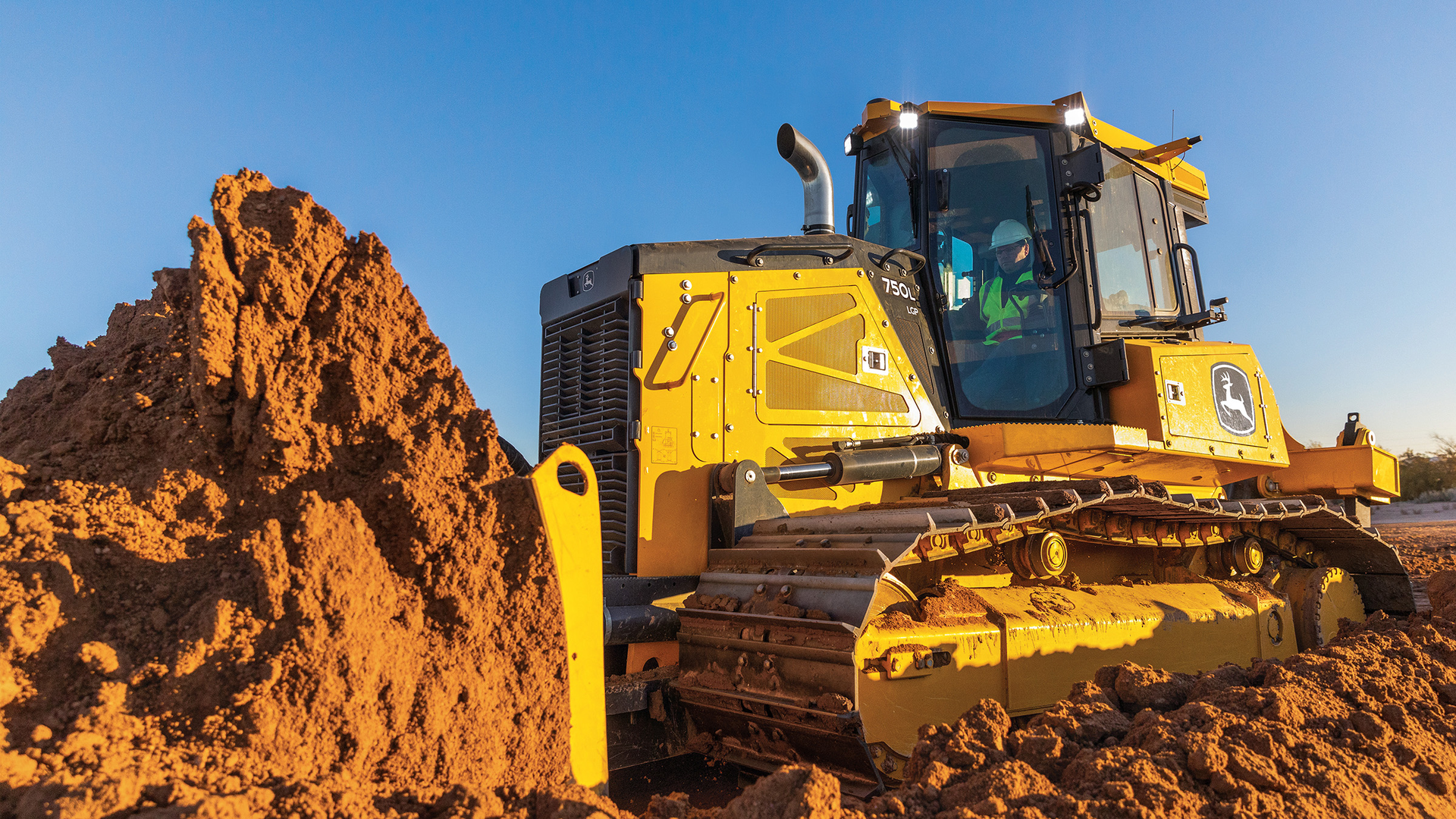
The John Deere 750L has a Deere PowerTech PVS 6068 engine rated at 131 net horsepower. Operating weight is 38,330 pounds. Blade capacity is 5.6 cubic yards. The dozer has hydrostatic drive with triple reduction final drive. The standard track has 40 shoes with a 7.5-inch pitch and single grousers designed for moderate service. Standard blade width is 129 inches; a 161-inch wide blade is optional.John Deere
Released in mid-2020, the 700L and 750L expand the L Series catalog for John Deere. The first was the 850L, released in 2019.
Features of the L Series include larger, more comfortable operator stations. Noise has been reduced more than half in the 700L compared to the 700K. Heated and ventilated premium seating and automatic temperature control are optional.
Horsepower and operating weight have been increased. An optional 161-inch blade is now available for the 750L. Hydraulic hose and electrical harness routing has been improved to reduce potential rub points, and hydraulic hose length on the 700L and 750L has been reduced 20%.
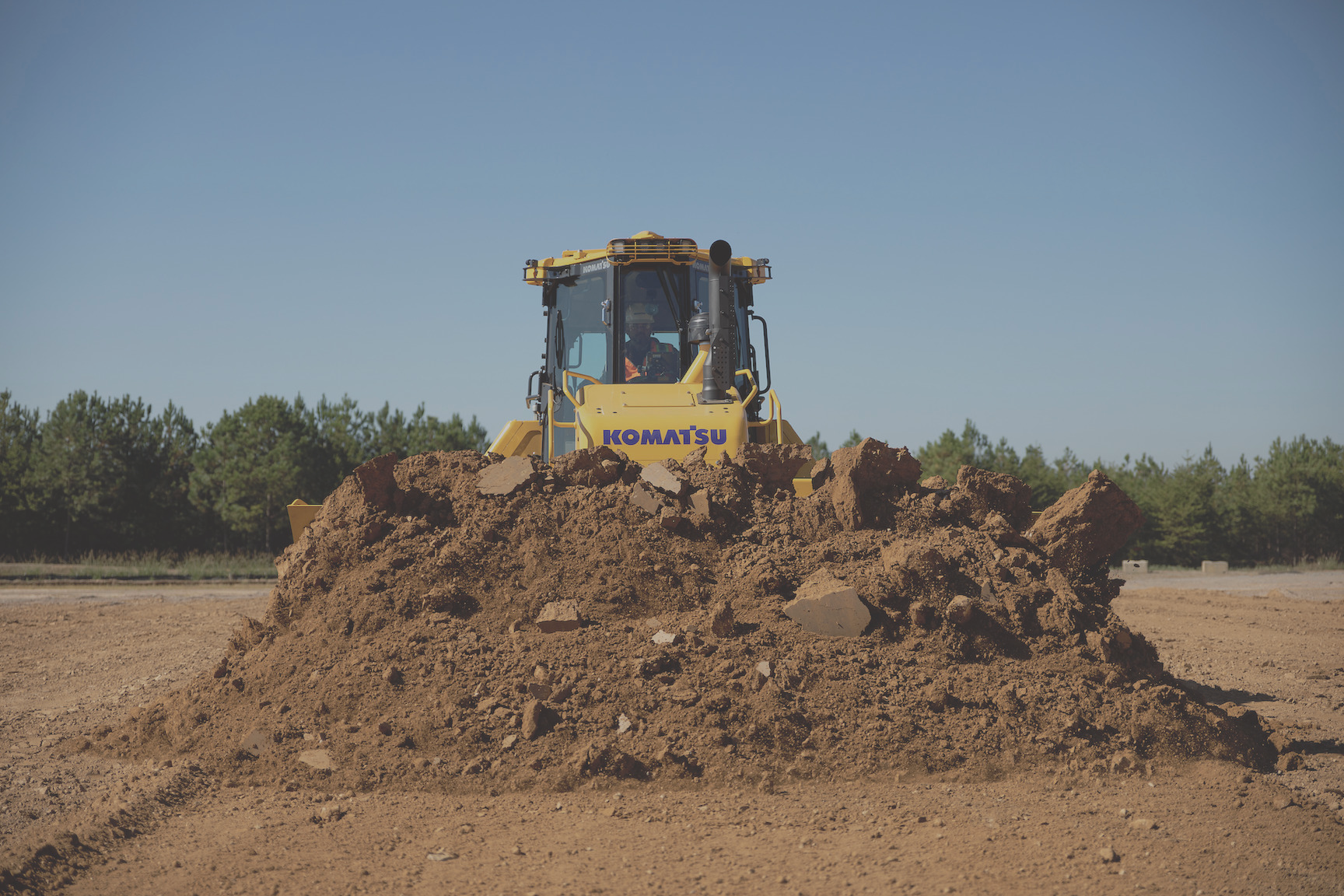
Komatsu’s D71PXiKomatsu
The D71-24 is Komatsu’s newest dozer. It is available with or without the company’s new iMC 2.0 intelligent Machine Control. All are powered by Komatsu SAA6D114E-6 engines rated at 237 net horsepower.
The D71 is Komatsu’s largest hydrostatic-drive dozer. Track options include 24-, 30- and 36-inch widths with blade capacities of 5.8 to 6.1 cubic yards.
“The D71 was a clean-sheet design,” says Andrew Earing, senior product manager, Komatsu. “The hydrostatic drive and standard PAT blade of the D71 make it a very nimble and versatile dozer.”
Other standard features include heated and ventilated seating, LED work lights and three-speed blade drop to shed sticky materials. Fast steering mode slows the inside track but also accelerates the outside track for tighter, faster turns while still allowing counter-rotation.
In a previous interview with Equipment World, LiuGong indicated its revamped Dressta dozers were scheduled for a fall launch. We have no additional information at this time.
Grade control technology
Deere has launched Slope Control on several dozer models in recent years, filling a need for less complex technology that doesn’t use a 3D model or external reference, such as a base station or laser.
“While adoption of 3D grade control systems has been significant over the past five or more years,” says Goedert. “There is still a place for entry-level grade control technology to grow adoption and simplify tasks.”
Slope Control automatically controls the blade, is designed to be simple to use and offers two operating modes, joystick and target. This entry-level system can be upgraded to Deere SmartGrade advanced 3D grade control at any time. SmartGrade performance responds to multiple inputs, including load levels, material types and dozing activities.
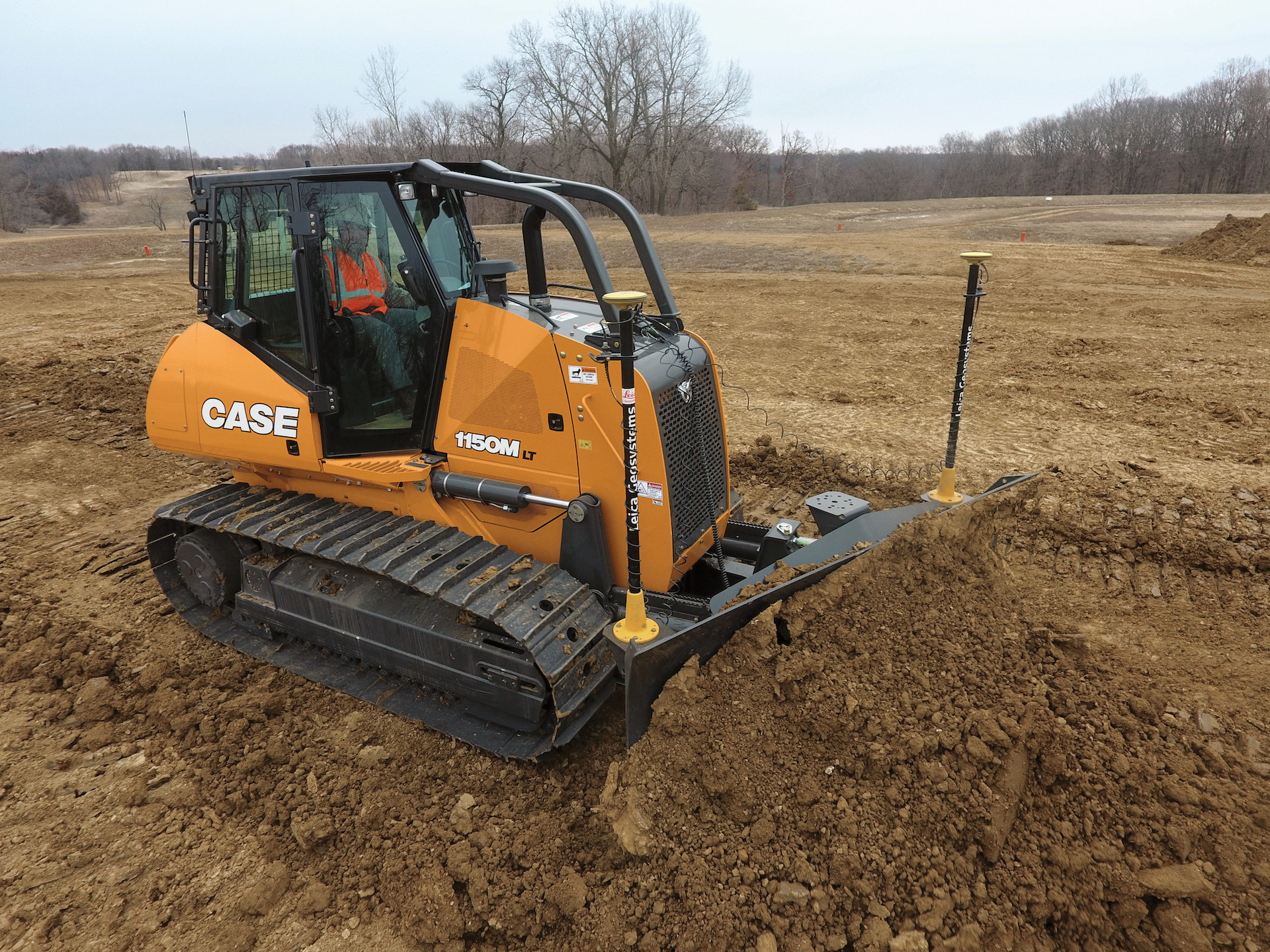
Case factory-fit machine control from Leica is available on 750M through 2050M dozers. Multiple levels of control are also available. For customers with six-way (PAT) blades working in extreme conditions, the iCON grade MCP80SP adds SP sensor technology and dual blade-mounted GNSS antennas for speed and accuracy.Case CE
Case announced in March the availability of its factory-fit machine control option on 750M through 2050M dozers. Packages include Leica Co-Pilot, 2D and dual-mast 3D systems. The factory installation includes calibration using Case World Class Manufacturing processes so the dozer arrives at the dealership ready for immediate use.
Jeremy Dulak, product manager for dozers, cites several advantages to the factory-fit approach. “The first is simplified ordering. Working with your Case dealer, you can group the Leica system that best fits your operation in with the purchase of the machine.” This allows a single payment, a single financing package, a single approval and a single interest rate.
Factory fit also ensures that when the machine arrives at the dealer, “it’s ready to go after just a very quick calibration.” And factory fit preserves residual value, he adds, because “the second owner will have confidence knowing the system was purpose-built to that specific machine and meets all quality and performance standards intended by the manufacturer.”
Komatsu’s iMC 2.0 offers “grass-to-grade automation,” says Earing. Most systems focus on grading; iMC 2.0 adds automated lift control for the fill process. This dramatically aids compaction and reduces the likelihood of costly rework by allowing each layer to be compacted before the next layer is lain.
Komatsu says iMC 2.0 brings performance to a level that is 96% equivalent to that of an experienced operator, which elevates the performance of lesser-skilled operators. Seasoned operators also benefit from iMC 2.0 because it will maintain settings they create, a feature Komatsu calls “operator-guided automation.”
Each Komatsu dealership has a technical service expert to help train customers on iMC 2.0. TSEs also help with the installation of systems from Topcon, Trimble and Leica.
Did you miss our previous article…
https://www.tortowheaton.com/?p=389
Matt Pruss, Pruss Excavation, named Equipment World’s 2021 Contractor of the Year

Matt Pruss, Pruss Excavation, Dodge, Nebraska, has been named Equipment World’s 2021 Contractor of the Year.
In accepting the award, Pruss said: “This is a great group of contractors and I was super excited to meet them. I’m very honored to be part of this.”
The construction linage is deep in the Pruss family. Matt’s grandfather, Jim Sr., started Pruss Excavation in 1968. His father, also named Jim, joined him four years later, and Matt came on board in 2001. The company now has 40 employees and has $7 to $10 million in annual revenues performing levees, road work, wetlands, site work and lagoons.
The event also marks the first time in the program’s 21-year-history that the succeeding generation of a former finalist has been named both a finalist and a winner. Jim Pruss Jr. was a Contractor of the Year finalist in 2004.
The company now works within a 250-mile radius of its Dodge, Nebraska, headquarters. Local authorities called on the firm when two major floods hit Nebraska in 2011 and 2019. The company’s existing fleet of pull-behind scrapers plus a few more that it bought from as far away as Florida proved themselves on U.S. Army Corps of Engineers flood mitigation projects during the 2011 flood.
“That was our huge giant boost,” Matt says. “We went from $3 million a year to $8 million.”
That work ethic continued on the next major flood Nebraska went through, this time in 2019. “They continued to push through on our job even while they were doing levee work for the state,” says one client. “It was a big deal. Matt knows he can’t just be an owner and pick up a paycheck. He’s very involved and he drives the ship on their modeling.”
The Equipment World Contractor of the Year program has been sponsored by Caterpillar since its inception in 2000. It recognizes contractors who display the highest standards of business acumen, equipment management expertise, attention to safety and community involvement. Each year, 12 finalists receive an expense-paid trip to Las Vegas to participate in roundtables and an award ceremony.
Did you miss our previous article…
https://www.tortowheaton.com/?p=379
12 Road Projects Named Finalists for America’s Transportation Awards
After months of regional competitions, 12 road construction projects have been chosen as finalists for America’s Transportation Awards.
The awards, sponsored by the American Association of State Highway and Transportation Officials, include projects in Arizona, Delaware, Florida, Indiana, Kansas, Kentucky, New Jersey, North Carolina, Oregon, Pennsylvania, South Carolina and Utah. Along with AASHTO, the U.S. Chamber of Commerce and AAA sponsor the awards program.
“This competition recognizes just a few examples that highlight the ways in which state DOTs are improving quality of life and economic vitality of our communities, saving time and money through new innovations and technologies, and making better use of assets already in place,” says Jim Tymon, AASHTO executive director.
The grand prize and People’s Choice winners will be announced October 26. Each winner receives $10,000 cash to donate to the charity of its choice. The competition evaluates projects in three categories: Quality of Life/Community Development; Best Use of Technology & Innovation; and Operations Excellence.
Finalists are also categorized by project size: small (projects costing up to $25 million); medium (projects costing between $26 million to $200 million); and large (projects costing more than $200 million).
Here are the 12 finalists:
Kentucky Transportation Cabinet – Brent Spence Bridge Emergency Repair Project (Operations Excellence, Small project group) (Photo above.)
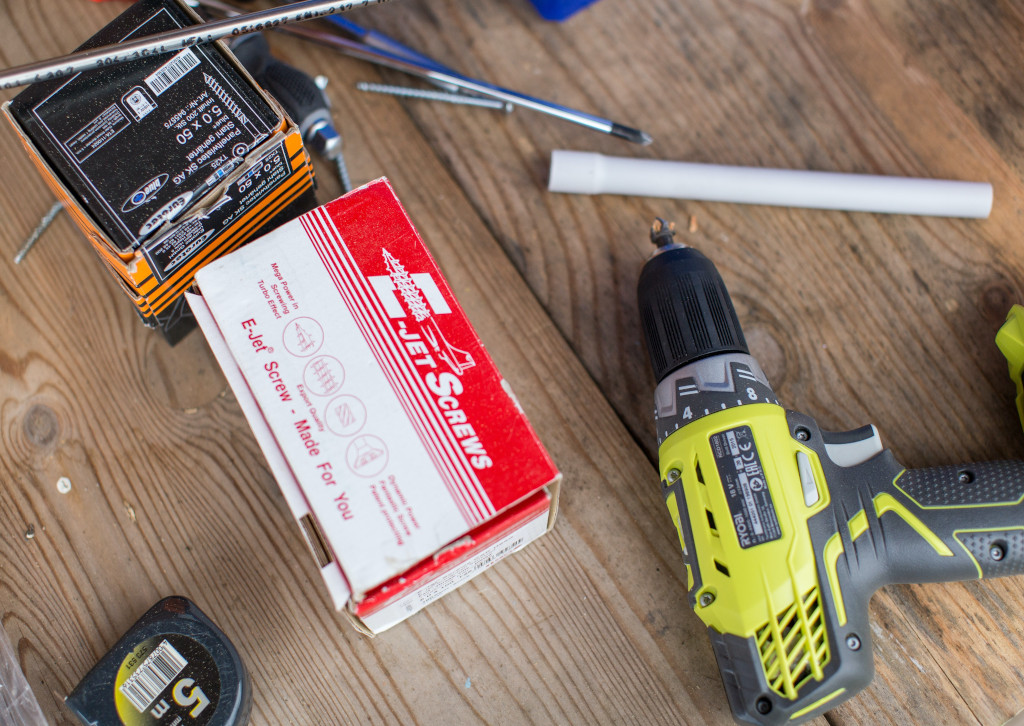
Safety for drivers, cyclists and pedestrians was improved with the $13.9 million widening of the Fourth Street Bridge over Interstate 40 in Flagstaff, Arizona.Arizona Department of TransportationArizona DOT – Fourth Street Bridge over Interstate 40 (Quality of Life/Community Development, Medium project group)

The Delaware Department of Transportation alleviated traffic congestion and created more transportation options for a Wilmington community by constructing the $82 million Senator Margaret Rose Henry Bridge.Delaware DOTDelaware DOT – Margaret Rose Henry Bridge and Approach Roads (Operations Excellence, Medium project group)

The Florida DOT deployed a SMART Work Zone System that included a temporary traffic signal, three closed circuit cameras and nine Bluetooth devices on its project to improve the Cow Key Bridge.Florida Department of TransportationFlorida DOT – Leveraging Innovation: How FDOT Transformed the Gateway to Florida Keys (Best Use of Technology & Innovation, Small project group)
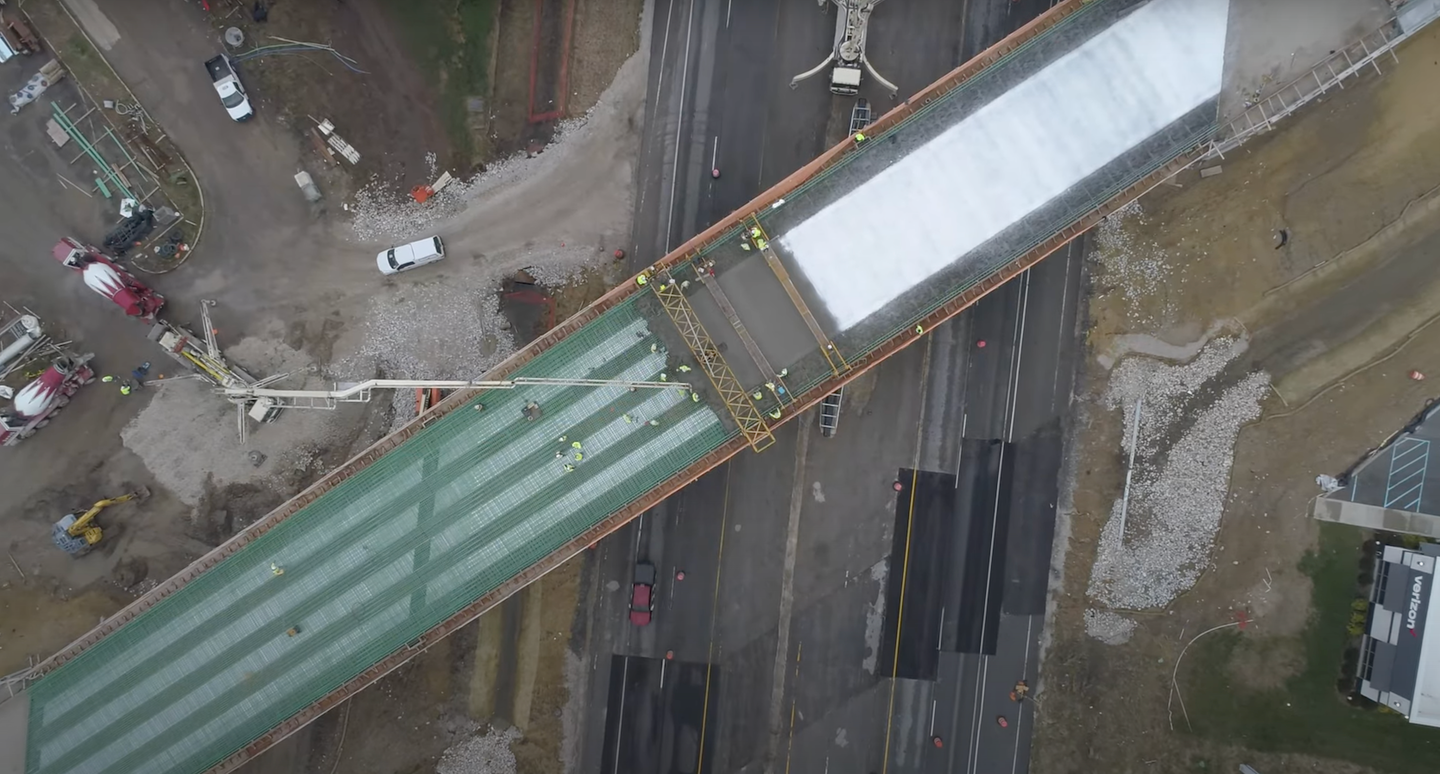
The Indiana Department of Transportation opened the Grand Valley Boulevard Bridge on June 15, 2020, in Martinsville. Replacing a section of four-lane State Road 37, the bridge gives drivers and pedestrians a safe connection to neighborhoods, schools and businesses.Indiana Department of TransportationIndiana DOT – Grand Valley Boulevard Bridge (Quality of Life/Community Development, Small project group)
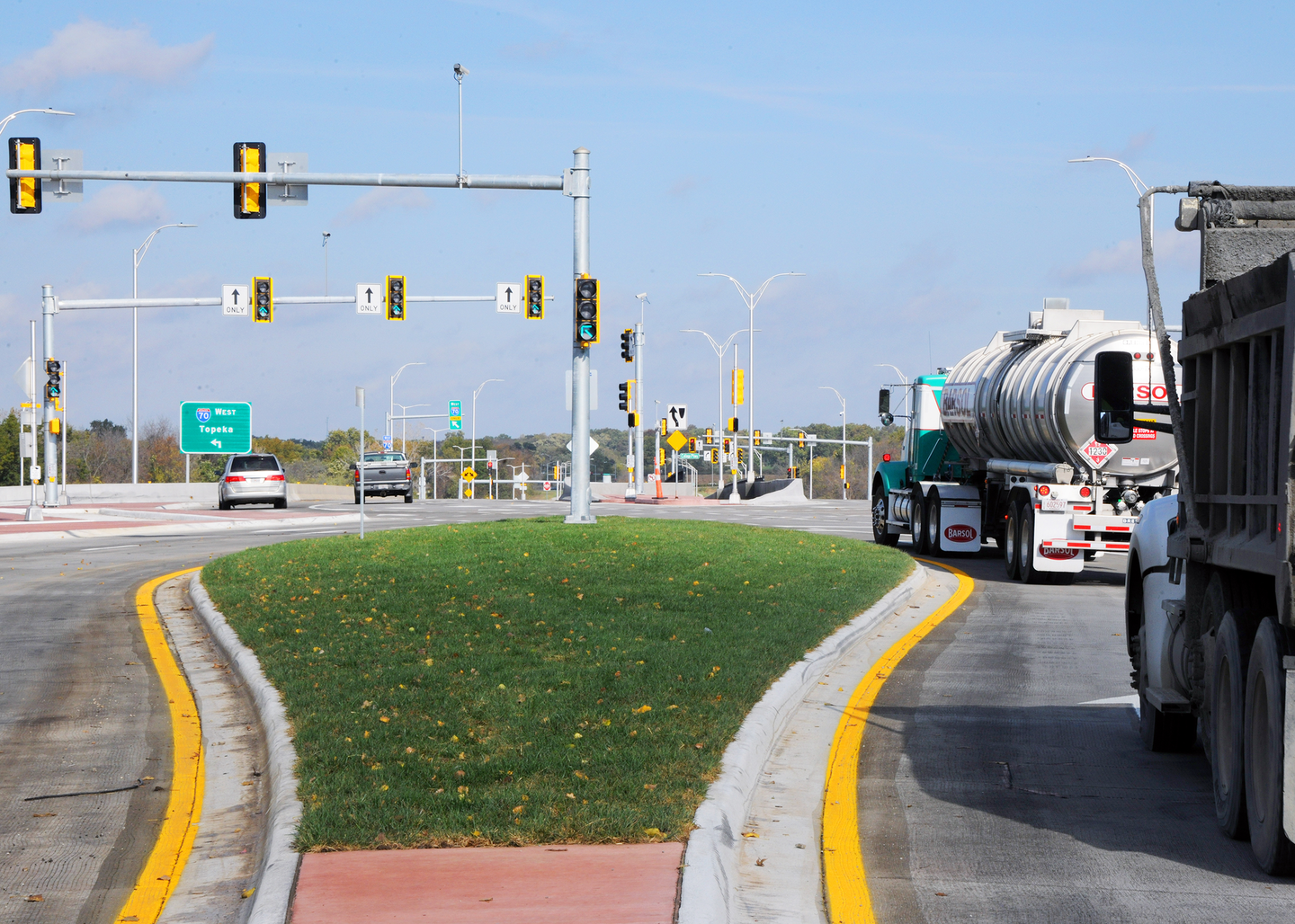
Originally designed as a toll road in the 1960s but toll booths were never installed, the Turner Diagonal Interchange in Kansas City had three miles of obsolete and hazardous ramps. The Kansas Department of Transportation’s $30.3 million project increased safety and economic development.Kansas DOTKansas DOT – Turner Diagonal: Partnering for Growth (Operations Excellence, Medium project group)
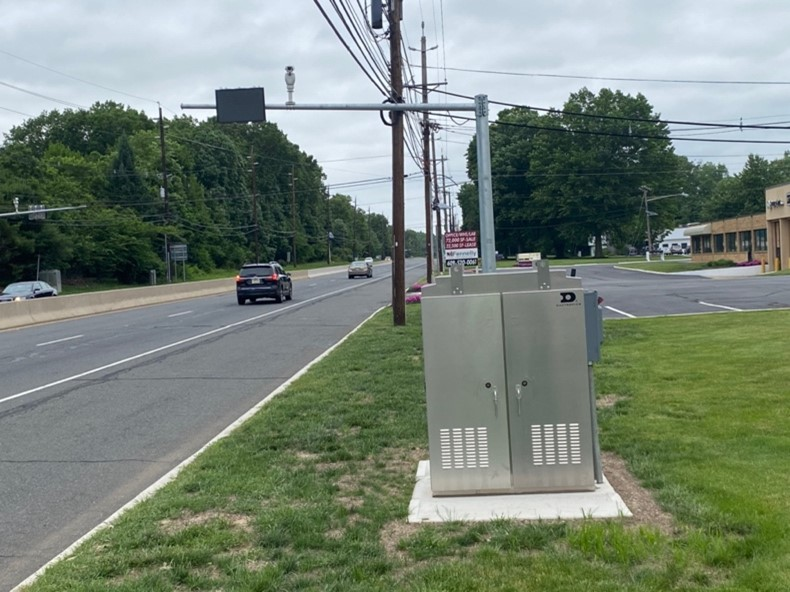
The $25 million Route 1 Permanent Hard Shoulder Running Project overseen by the New Jersey Department of Transportation improved safety, increased emergency access, increased capacity and travel reliability, and cut commute times by up to 50 percent.New Jersey DOTNew Jersey DOT – Route 1 Permanent Hard Shoulder Running Project (Operations Excellence, Small project group)
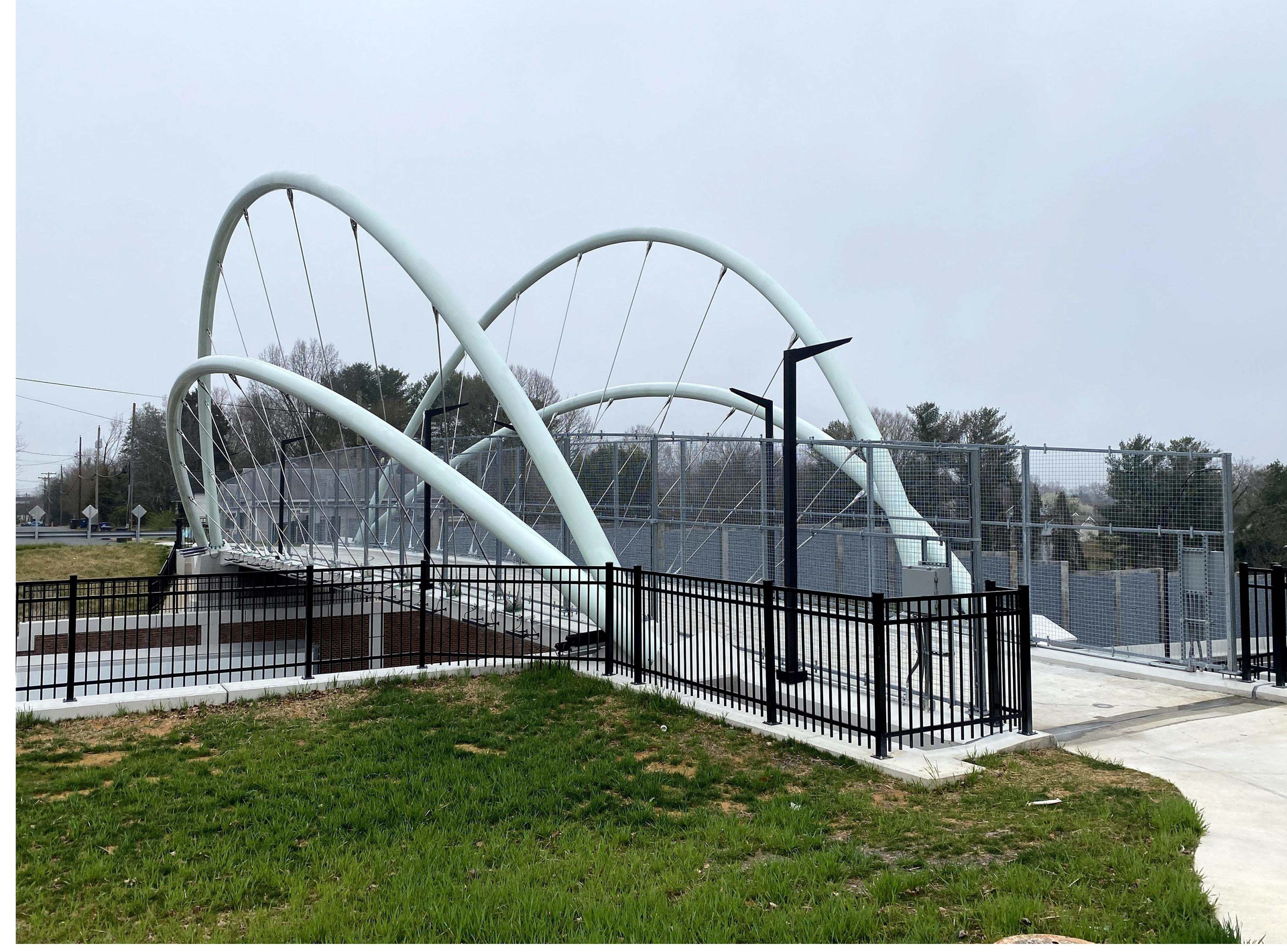
The $101.6 million Salem Parkway improvement project in Winston-Salem, North Carolina. The project included 10 bridge replacements, two new pedestrian bridges, a walking and biking path and extended sidewalks.NCDOTNorth Carolina DOT – Reconstruction of Salem Parkway (U.S. 421/I-40 Business) (Quality of Life/Community Development, Medium project group)
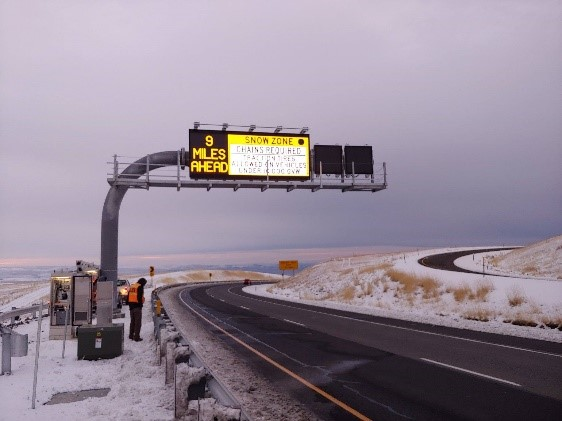
Oregon Department of Transportation developed a $15.6 million automated system that posts real-time weather, traffic flow and surface condition readings on digital billboards on Interstate 84 in northeastern Oregon.Oregon DOTOregon DOT – I-84 Snow Zone Safety Improvement Project (Operations Excellence, Small project group)

To improve accessibility and safety for motorists, bicyclists, boaters and pedestrians along SR 381, the Pennsylvania Department of Transportation launched a $12.8 million multimodal gateway project at Ohiopyle State Park.PennDOTPennsylvania DOT – Ohiopyle Multimodal Gateway (Quality of Life/Community Development, Small project group)

This stretch of scenic S.C. 61 in the Charleston area underwent a $4.4 million improvement project to add new lanes and widen shoulders while reducing the number of trees cut.SCDOTSouth Carolina DOT – C. 61 Phase 1 (Rural Road Safety Program) (Operations Excellence, Small project group)
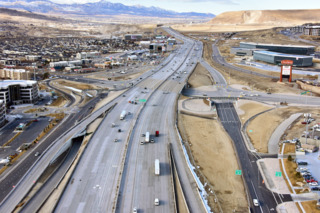
The Utah Department of Transportation completed a $415 million project that widened I-15 to six lanes in each direction, reconfigured two interchanges, replaced 15 bridges, built a new bridge, and created a new flyover ramp to address traffic congestion in rapidly growing Lehi.Utah Department of TransportationUtah DOT – I-15; Lehi Main to S.R. 92, Technology Corridor (Quality of Life/Community Development, Large project group)
An independent panel of transportation experts will choose the Grand Prize winner, while the public will select the People’s Choice Award winner through online voting weighted to each state’s population, AASHTO says.
The online voting ends at 11:59 p.m. October 25. Votes can be cast at AmericasTransportationAwards.org.
AASHTO will announce the winners during its Annual Meeting October 26-29 in San Diego.
Did you miss our previous article…
https://www.tortowheaton.com/?p=366
How to Solve Your Construction Labor Shortage

Still looking for the proverbial easy button to fill your talent pipeline? We hate to break it to you: there isn’t one.
“If you’re in this industry and not being the biggest promoter of it, you’re part of the problem,” says Benjamin Holmgren, president of Buildwitt Jobs. “You’re not going to solve it for the industry. Solve it for you.”
Holmgren was joined by Natasha Sherwood, executive director of the Independent Electrical Contractors Florida West Coast Chapter, and Steve Cona III, president and CEO of the Associated Builders and Contractors Florida Gulf Coast Chapter, in a recent panel discussion led by Autumn Sullivan, director of marketing and experience for Mobilization Funding.
The panel explored the issue of why skilled trade workers are leaving the industry, the impact of culture on recruitment and retention, and what companies can do to increase their talent pipeline.
Recruiting and retaining the next generation
So, can everyone stop blaming millennials already? Continuing to drone on about how millennials lack worth ethic is so 2010. Older millennials, those born in the 1980s, are established and in positions of power in their careers. Where the industry needs to focus its attention is Gen Z and Gen Alpha.
“I don’t believe it’s so much a labor shortage, as a shortage of leaders who know how to lead the next generation,” said Holmgren. “Kids my age want to have a mission to get behind. They want to have a vision. They want to be led, trained and developed.”
The companies that have solved this understand this workforce development crisis is not about millennials. “Taking ownership of solving this for your company is the elixir,” said Holmgren.
Shop class makes its comeback
Getting in front of Gen Z and Gen Alpha starts in school. Trade education in middle school and high school was nearly extinct but is slowly making a comeback. Until there is wider support for the curriculum at a state and district level, getting involved at an individual level is critical.
Construction companies can help through apprenticeships and mentor programs. Contractors involved in mentorship see better hiring success because they already have name recognition with students, panelists said.
“The greatest benefit to our industry would be a solid pipeline out of high school and into the trades,” said Cona. “It has to be a statewide effort in our educational system to promote opportunities in all occupations that don’t necessarily require a four-year degree. The average age of our apprentice is 26-27 years old, and we have to get that lower to 21-22 years old. It can’t be an afterthought.”
Outside of local efforts, Holmgren suggests meeting the younger generation where they are online.
“It’s one thing to put on a trade show or job fair, but what about Instagram? TikTok? One thing you can start doing today is using social media to tell the story of your business and show people what it’s really like to work in your industry. It’s not that you have to make it look cool; the trades are already cool. Come join us – that’s what we need to be telling people.”
Work culture in construction
Taking ownership of the construction recruitment and retention problem also means taking a hard look at company culture. For better or worse, every company has a culture. How that culture has evolved depends on how it is emulated and nurtured daily.
Work culture has been cited as a major factor in many skilled-trade veterans leaving their employer or the industry entirely. While culture is a hot topic in the construction industry, and often framed as something only young people are pushing for, it has a significant impact on retention across the board.
“You can tell that no matter the age of the employee, they are all looking for a culture that has a family atmosphere, opportunities for advancement, flexible hours and good benefits,” said Sherwood. “I just helped a fourth-year apprentice graduate who had an opportunity to go anywhere. He took a job at a company that paid $2 less an hour because it was a good fit. There’s that level of appreciation that is sometimes more important than the dollar bottom line.”
lternative talent pipelines
Beyond young people, there are many other viable talent pools and untapped markets to help fill the skilled-worker pipeline. Correctional institutions, foster care systems and the military are just a few options.
“We’re looking for all sorts of avenues to fill that pipeline, and one of those is folks coming out of corrections,” said Cona. “We’re getting asked by state leaders and politicians to work with them to help develop skills while people are still incarcerated. So whenever they get out, they can get plugged back into society. If you can give people opportunities and jobs when they get out of being incarcerated, their chances of going back are very slim.”
“The military does a great job recruiting kids, with ROTC officers and billboard campaigns,” said Sullivan. “The trades need to be seen as a viable option. You can feed your family, you can travel around the country – there’s a lot of opportunity depending on where you want to go with it.”
Continuing education for retention
While there are required continuing education credits in the construction industry, employers should also consider training that provides employees with a path toward a goal they value, such as moving from apprentice to superintendent.
“In this day and age in this economy, you have to invest in training your workforce. There are no unemployed electricians and plumbers sitting on the sideline,” said Cona. “You have to build your pipeline by investing in people who might not necessarily have the skills that you need at that time. Invest in your employees, train them, put them in apprenticeship programs and maintain it through their lifecycle as an employee.”
An engaged employee is someone who stays with you.
Changing the narrative
While the narrative that construction is a dead-end job is a systemic problem, individual companies can start making strides today to reframe the conversation and illuminate the opportunities.
“This country was built because people learned skills, created things and built things. No one can say this country was built because people went to college. That’s what we need to continue to push,” said Cona. “As parents, as an industry, we need to be better at pushing the narrative that this is a viable option.”
“Don’t people get tired of talking about finding good help?” adds Holmgren. “We know you can’t find good help. Do something.”
“I’m not interested in solving the industry’s labor-shortage challenge, but if there is one person who can take something from this and it lights a spark and they can solve it for them, that’s a win.”
Watch the full webinar here.
Did you miss our previous article…
https://www.tortowheaton.com/?p=363
Skycatch Releases Flight1x Cloud-Based Drone Solution

Using photogrammetry, drones can collect enormous amounts of information on earthmoving, industrial and mining sites. But when it comes to downloading all that data … put on a fresh pot of coffee, there’s lots of time involved.
That’s why many in the industry may be interested to hear that Skycatch, a data automation and analytics provider for drone mapping, has announced the release of Flight1x, a cloud-based solution for the DJI M300 drone platform.
Built on technology adopted by large mining companies and suppliers such as Komatsu and AngloAmerican, Flight1x is proprietary software developed specifically for the M300 that, according to the company, offers the most complete end-to-end high precision industrial drone capabilities available today.
Compared to off-the-shelf photogrammetry tools and laser sensors, Skycatch’s drone software reduces the time required to obtain high-accuracy 3D data by 60% and delivers results in 10 to 15 minutes compared to the more typical three hours. Flight1x takes these capabilities to the next level on the M300, delivering sub-3-centimeter accuracy for tailings management and inspection.
This reduces surveying costs, improves production planning and minimizes the risk of human error in hazardous mining sites. Skycatch’s analytics platform, Datahub, delivers added value for specific industrial workflows such as pit survey, highwall mining and repeatable tailings inspections.
Skycatch specializes in bridging data from the physical world to the digital. The new Flight1x solution delivers data and network security via Skycatch servers in the United States coupled with advanced automation features like a 3D first-mission planner, mining-focused workflows and deep integration into Datahub.
Additional functions and features when using the Flight1x software and M300 include:
Automated capture, extraction and processing of high-precision 3D point clouds.>Specialized mission planning automation to extract data from complex terrains such as high walls.>Complete industrial data capture and processing for repeatable and automated spot inspection.>Consistent data retrieval analysis of thousands of terrain spots in a single location by an automated industrial drone. >Automated aerial robot technology built on Skycatch’s platform that eliminates need for manual pilots and reduces risk of human error.
Did you miss our previous article…
https://www.tortowheaton.com/?p=360